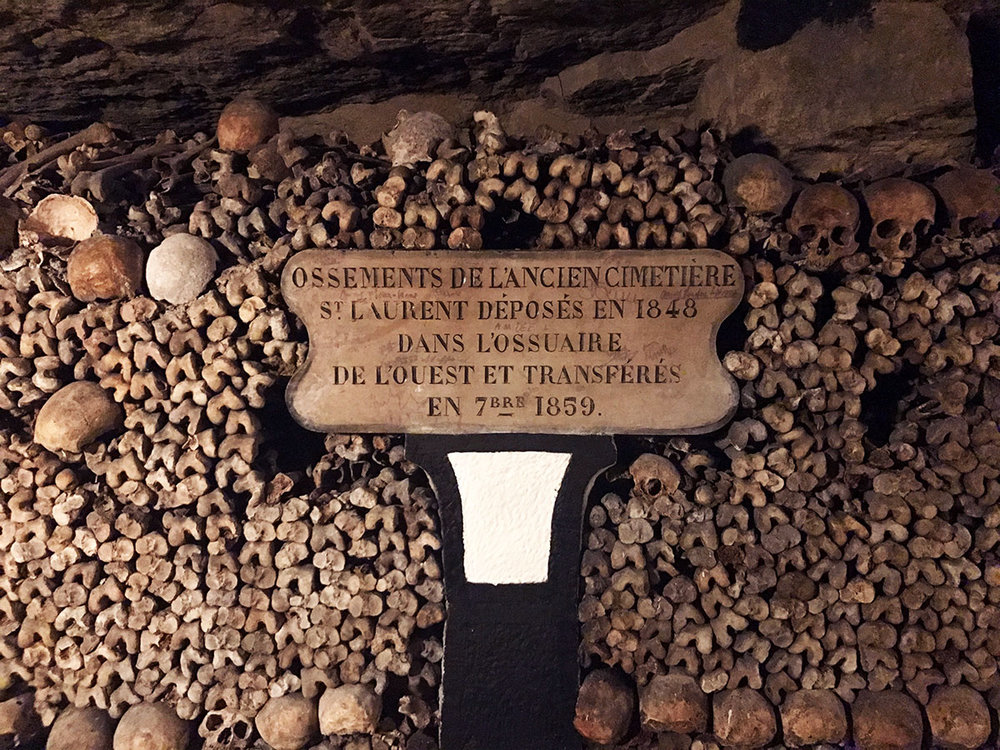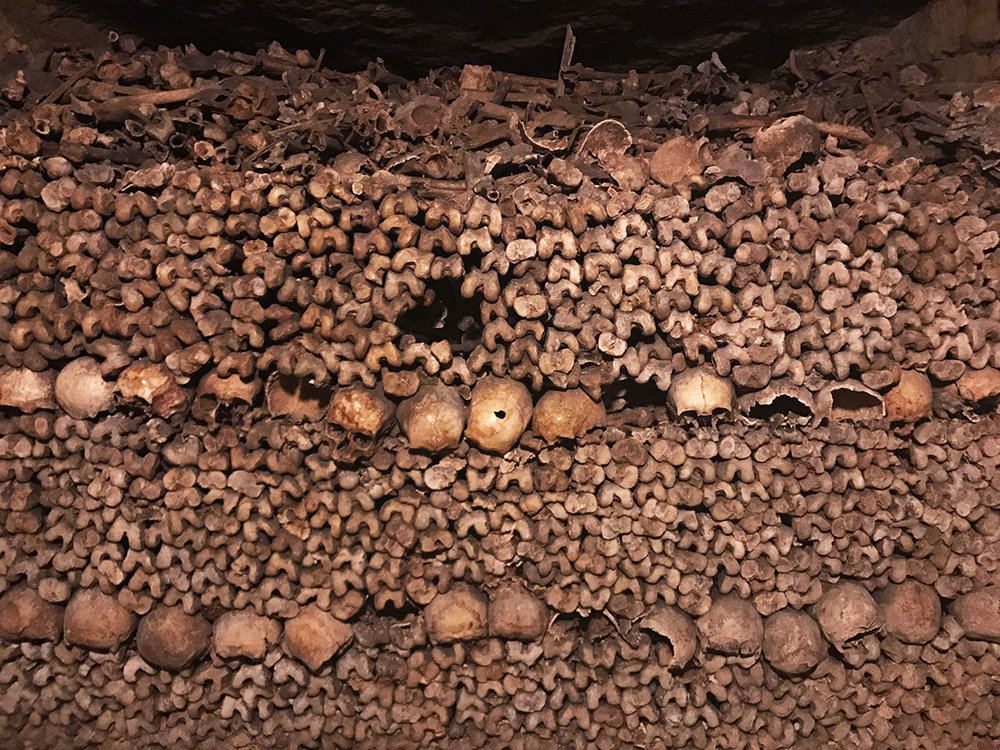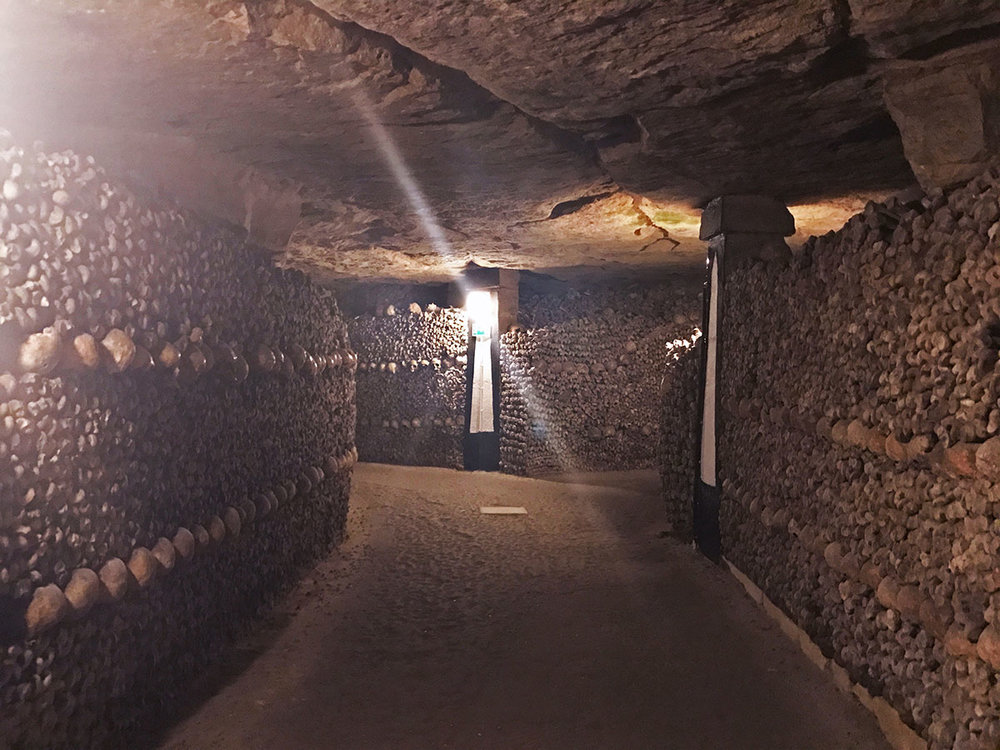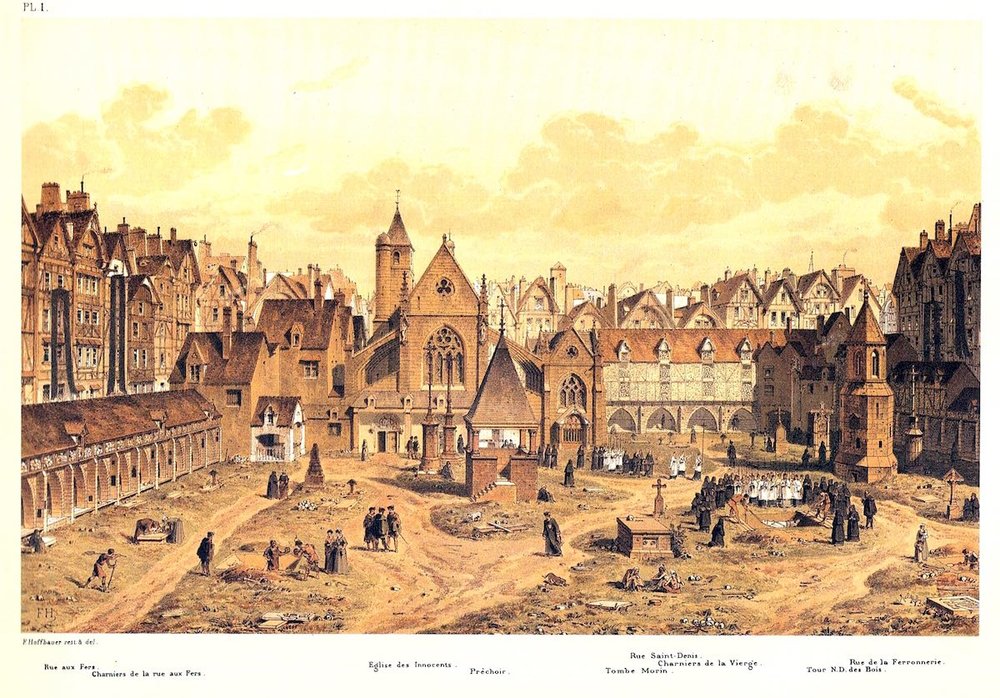What Lies Beneath Paris: the Catacombs
/
Sixty-five feet underground (twenty meters), beneath the iconic streets of Paris remains another world; a world full of darkness, death, suffering: here lies the bodies of roughly six million Parisians.
Descending 132 steps down a narrow spiral staircase into a labyrinth of 200 miles of dark tunnels, caves and quarries known as the Catacombs of Paris. You've traveled so far down, that now above you lies the complex system of the metro, drinking water lines and sewers above us.
Glimpse into Paris' eerie underground and dark past in the catacombs.
History of the Catacombs
45 million years ago, Paris and the surrounding area were underwater, collecting sediment and deposits of limestone. As early as the first century AD the Gallo-Romans were using this limestone to build modern day Paris. Many of these architectural features such as the Louvre and Notre-Dame Cathedral can still be seen today.
Unfortunately, with many hundreds of years of uncontrolled mining of the limestone, the city was left vulnerable to collapse.
Overcrowded Cemeteries
As Paris started to become a major European hub and the population grew, cemeteries were overflowing, particularly the Cemetery of the Innocents, proposing a growing health risk.
The Cemetery of the Innocents, located in the Les Halles district (1st arrondissement), was the oldest and largest cemetery in Paris, often used for mass graves. It housed the majority of Parisians since the middle ages. Thousands of bodies piled up in the city contaminating the air. The smell of decomposing flesh lingered in the areas surrounding the cemeteries.
Because of the stench from the cemeteries, in 1763, Louis XV issued an edict banning all burials from occurring inside the capital, but because of pushback from The Church, which didn't want cemeteries disturbed or moved, nothing else was done.
A Series of Collapses
In 1774, a mine in the city caved in and Paris streets and buildings collapsed as the quarries weakened parts of the cities foundations, causing panic to the population of Paris and further adding bodies to the limited cemetery space.
King Louis XVI was urged to take action so he commissioned a team to investigate the state of the Parisian underground. The abandoned quarries were deteriorating. With another mine collapse in 1777, more pressure was put on the king to reinforce the underground.
In 1780, after a long rainy spring, the weight of mass graves was too much. The wall around the overcrowded Cemetery of the Innocents collapsed, and bodies flowed into the neighborhoods. The cemetery was officially closed.
Repairs and reinforcements were completed of the quarries, and in 1782 it was proposed to move the bodies into the recently examined subterranean passageways.
Moving the Bodies
Cemeteries began to be emptied in 1786, beginning with the Cemetery of the Innocents. Hearses moved bodies at night for two years while priests chanted. Bones were thrown down shafts all together with no distinction of age, place of burial, etc.
In 1810, the then director of the Paris Mine Inspection Service decided to re-organize the remains into a respectful, almost romantic display that we now see today. It took until 1814 to move all the bodies.

Public visits began after its renovation into a proper ossuary and the 1814 – 1815 war. First allowed infrequently and only with the mine inspector. In 1833 the catacombs were closed permanently due to the churches opposition to put human remains on display. In 1850, the catacombs were reopened publicly four times per year. Public demand increased visits to monthly, then bi-weekly, then later, daily.
It is with a heavy heart visitors walk through the catacombs. There is a strong sense of respect and fear in the depths of the Paris underground passageways.
A surreal feeling; you are truly unprepared for the mass amount of bodies around every turn. They seem to be endless.

I wonder about their past, their lives. The history of humanity, what their life was like, the struggles they faced, the love they shared.
Today the Catacombs are open to the public Tuesday-Sunday, from 10am until 8:30pm. Last admission is 7:30pm.
Full rate: 12 euros*
Audio guide: 5 euros*, guides in French, English, Spanish and German.
Online ticket price: 27 euros* with audio guide, but wait maybe 20 minutes where the regular line is a few hours.
*Prices are as of summer 2017.
No headphones are provided with the audio guide, so bring your own.
The tour is unsuitable for people with heart or respiratory problems, it can be a little claustrophobic. The Catacombs are not accessible for persons with reduced mobility.
Bring a sweater, the Catacombs are 14 degrees celsius (57 degrees F) year round.
Buy your ticket to the Catacombs online here.
For customized recommendations of Paris, expert advice and time saving tips, contact us to plan your trip to France.
Next: 13 Inca Ruins to Explore in Peru That Are NOT Machu Picchu
Visit France
Do you want to finally experience the Catacombs in Paris, France for yourself?
We’ve been to Paris; we’ve ridden the metro, waited in the lines, and seen the sights. We know how to optimize every experience to save you time, energy, stress and money. So you can make the most of your precious vacation time.
Trust Sapphire & Elm Travel to craft a truly memorable and stress-free vacation, unique to you.
Start planning your custom vacation.






